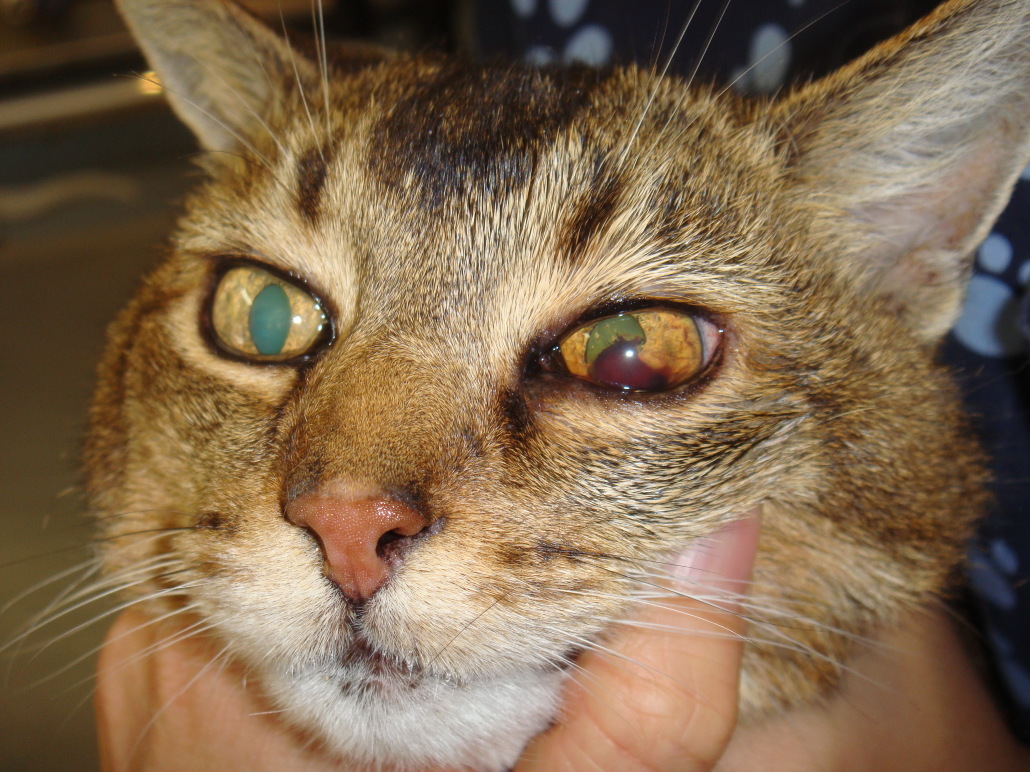Feline Hypertension (high blood pressure)
Feline hypertension (high blood pressure) is becoming much more widely recognized, mostly due to increased awareness and the availability of appropriate equipment with which to measure systolic arterial blood pressure. Screening cats at risk for systemic hypertension is an important consideration for many of our feline friends.
Causes of hypertension
- Chronic kidney disease (CKD)
- Polycystic kidney disease
- Other kidney diseases (Glomerulonephritis, renal pseudocysts) (rare)
- Hyperthyroidism
- Diabetes mellitus
- Adrenal disease (Hyperaldosteronism/Conn’s Syndrome, Hyperadrenocorticism, Phaeochromocytoma) (rare)
- Acromegaly (rare)
- Increased intracranial pressure (e.g. head trauma)
Effects of prolonged hypertension
- Sudden onset of blindness or bleeding into the eye (retinal detachment and haemorrhage)
- Haemorrhage or clots into the central nervous system (akin to a human stroke)
- Progression and exacerbation of renal disease
- Heart disease – enlargement of heart, murmurs and arrhythmias
How do we measure blood pressure in cats?
Your veterinarian may need to clip a small amount of hair on the underside of the tail or paw over the site of an arterial pulse. Conductive gel is then placed on the shaved part of the paw, and a sensor is then placed on the paw, with the gel being used to conduct the vibrations of the pulse. The technique for measuring pressure varies somewhat depending upon the instrument used. A blood pressure cuff is placed above the sensor, which is attached to a machine used to amplify the sound of the pulse. Animal legs are too small for a stethoscope, so the amplifier and sensor is used instead.
As when you get your own blood pressure taken, the cuff is inflated until the beating pulse is no longer heard. Then air is slowly allowed to escape the cuff. At the point the beating pulse is heard again, that is the blood pressure. In people, the first sound of the pulse is called the systolic pressure. As more air is let out of the cuff, there is a point when the sound of the pulse suddenly becomes louder. This is the diastolic pressure. However, when using a Doppler in animals, it is often difficult to detect this volume change. For this reason, the blood pressure is often expressed as a single value.
Other non-Doppler blood pressure (oscillometric) machines use electronic methods to detect the blood pressure. These machines can determine both systolic and diastolic pressure. At Midland Veterinary hospital we have both Doppler and oscillometric blood pressure units.
Most normal systolic values range from 110 to 160 mmHg and most diastolic values range from 55 to100 mmHg. Hypertension is defined as pressures > 160/110 mmHg. Hypotension is defined as pressures < 90/50 mmHg in the awake animal. Normal mean blood pressure (MAP) pressure is usually calculated as the average of systolic and diastolic pressures. Trends in repeated pressures are more significant than results of single measurements.
There is no pain involved in obtaining a blood pressure. However, some pets resent the restraint necessary to perform the test.
Management of hypertensive cats
In any diagnosed hypertensive, management has two broad aims:
- To reduce the blood pressure using anti-hypertensive drugs. A number of agents are available for treatment of hypertension although many of these are not specifically licensed for this use in cats. Examples of drugs commonly used are amlodipine (trade name Norvasc) and benazepril (trade name Fortekor).
- To search for an underlying disease, such as kidney disease, which has caused the hypertension. In some cases, for example hyperthyroidism, treatment of the underlying disease may also resolve the high blood pressure.
Our Midland & Drovers Vet Hospitals are both accredited ISFM Cat Friendly Clinics.

The Cat Friendly Clinic programme is an internationally recognised assessment accreditation scheme which is open to any veterinary practice that cares for feline patients. There are certain requirements regarding design, equipment and facilities within the clinic, which must be met to achieve the standard. The clinic must also demonstrate that a high quality of care is provided to cats and that all staff understand cats and their needs in a clinic.
The benefit to the clinic is that not only will the scheme help to improve the clinical care of feline patients but may also increase the number of clients who are actively seeking a cat friendly clinic for their pet.




